Click here and press the right key for the next slide.
(This may not work on mobile or ipad. You can try using chrome or firefox, but even that may fail. Sorry.)
also ...
Press the left key to go backwards (or swipe right)
Press n to toggle whether notes are shown (or add '?notes' to the url before the #)
Press m or double tap to slide thumbnails (menu)
Press ? at any time to show the keyboard shortcuts
Notes and Slides
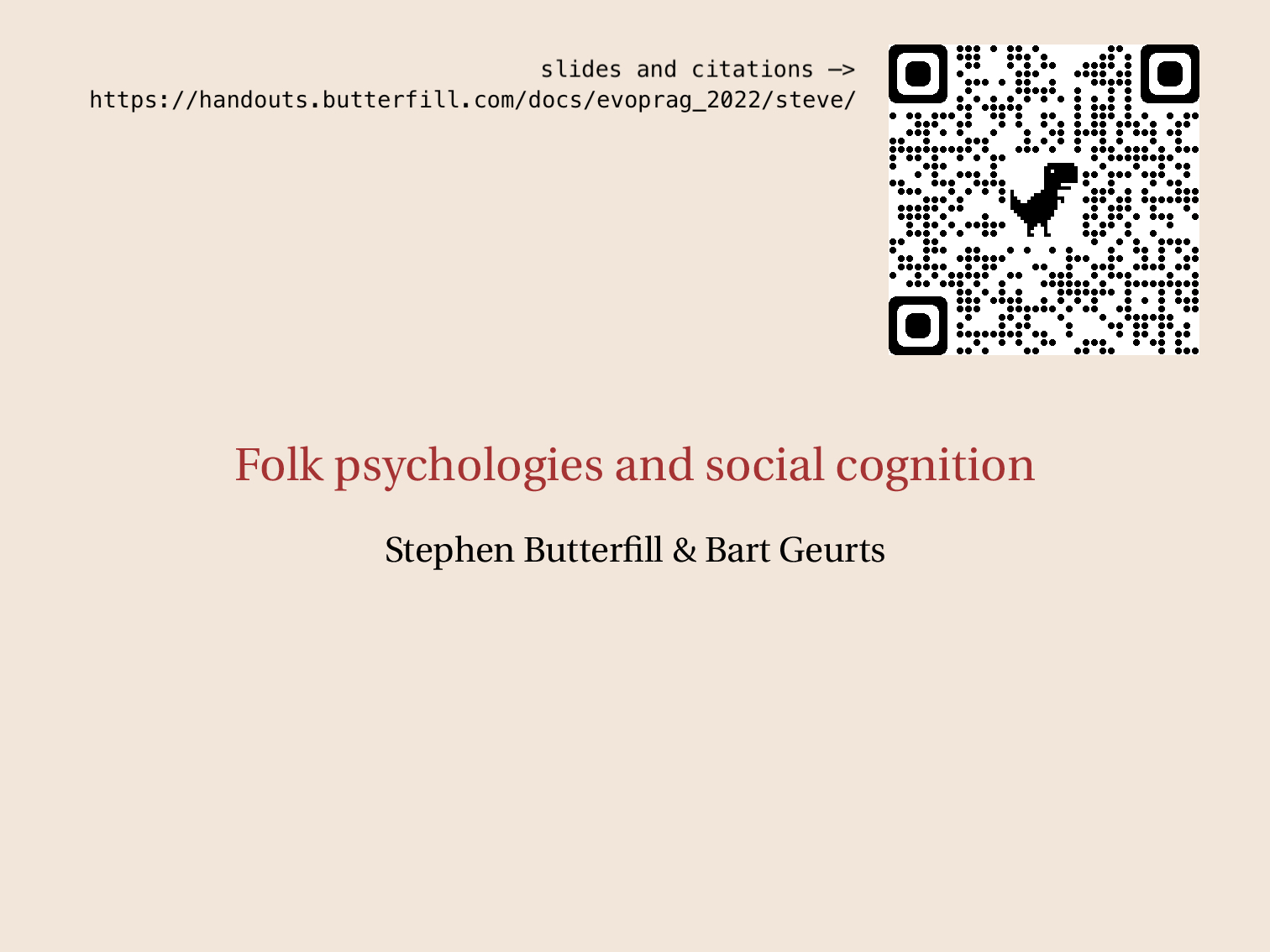
‘The words and phrases of natural languages comprise a treacherous basis for identifying valid psychological constructs, as I illustrate in emotion research.’
‘the emotion labels in natural languages do not have definite, stable, mutually transparent meanings.’
‘it is pernicious to use one language’s dictionary as the source of psychological constructs.’
Fiske (2020)
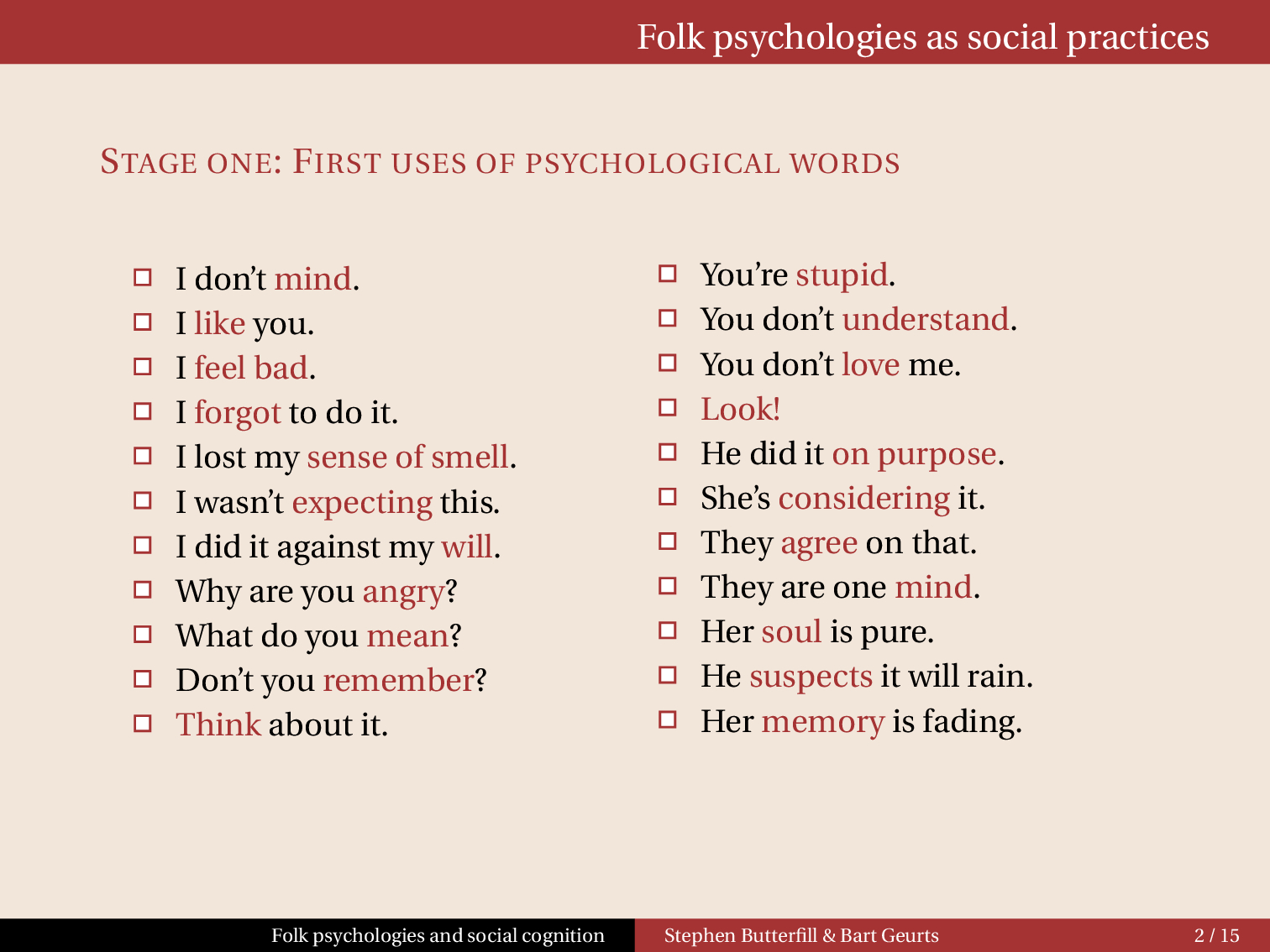
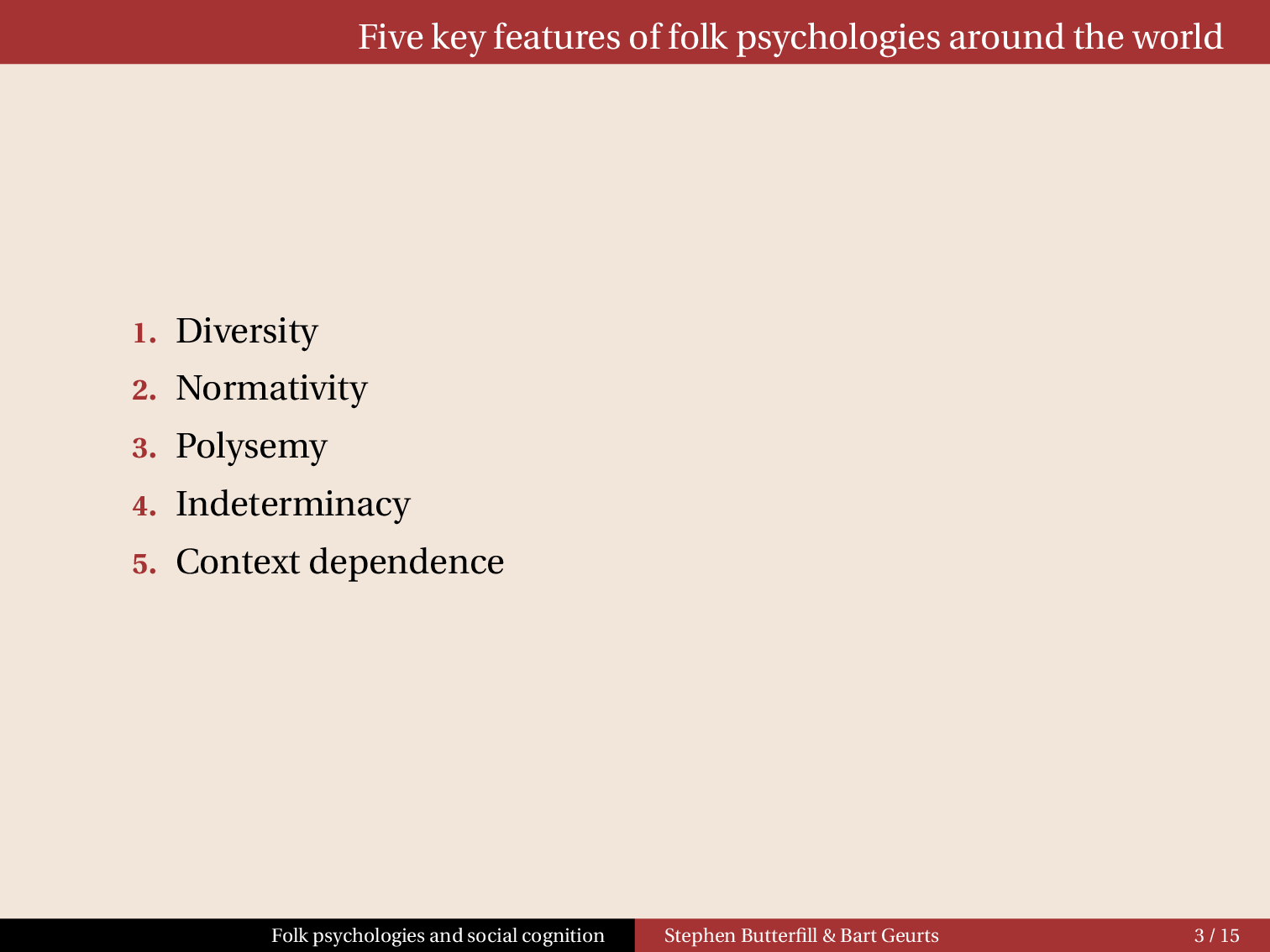
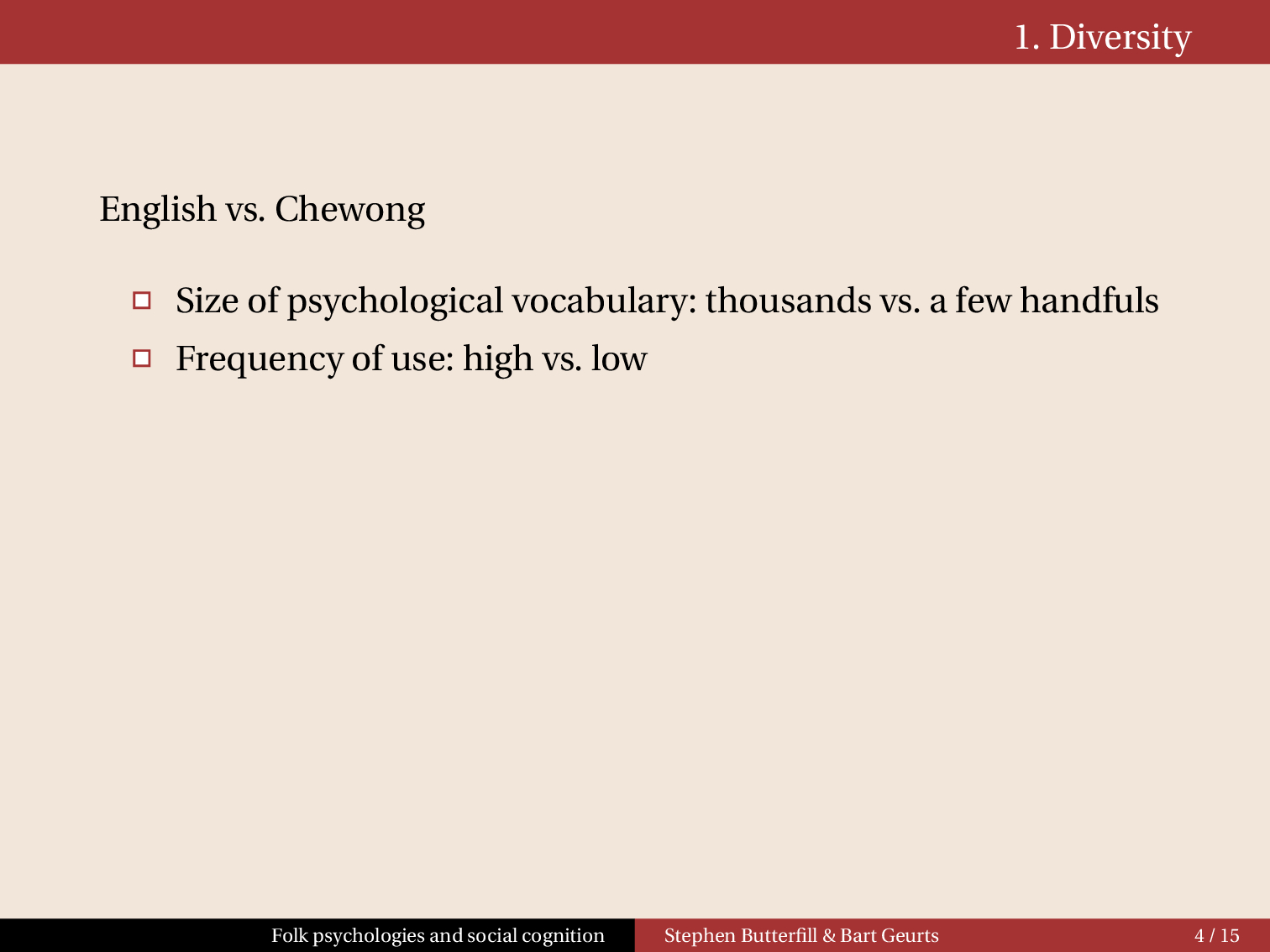
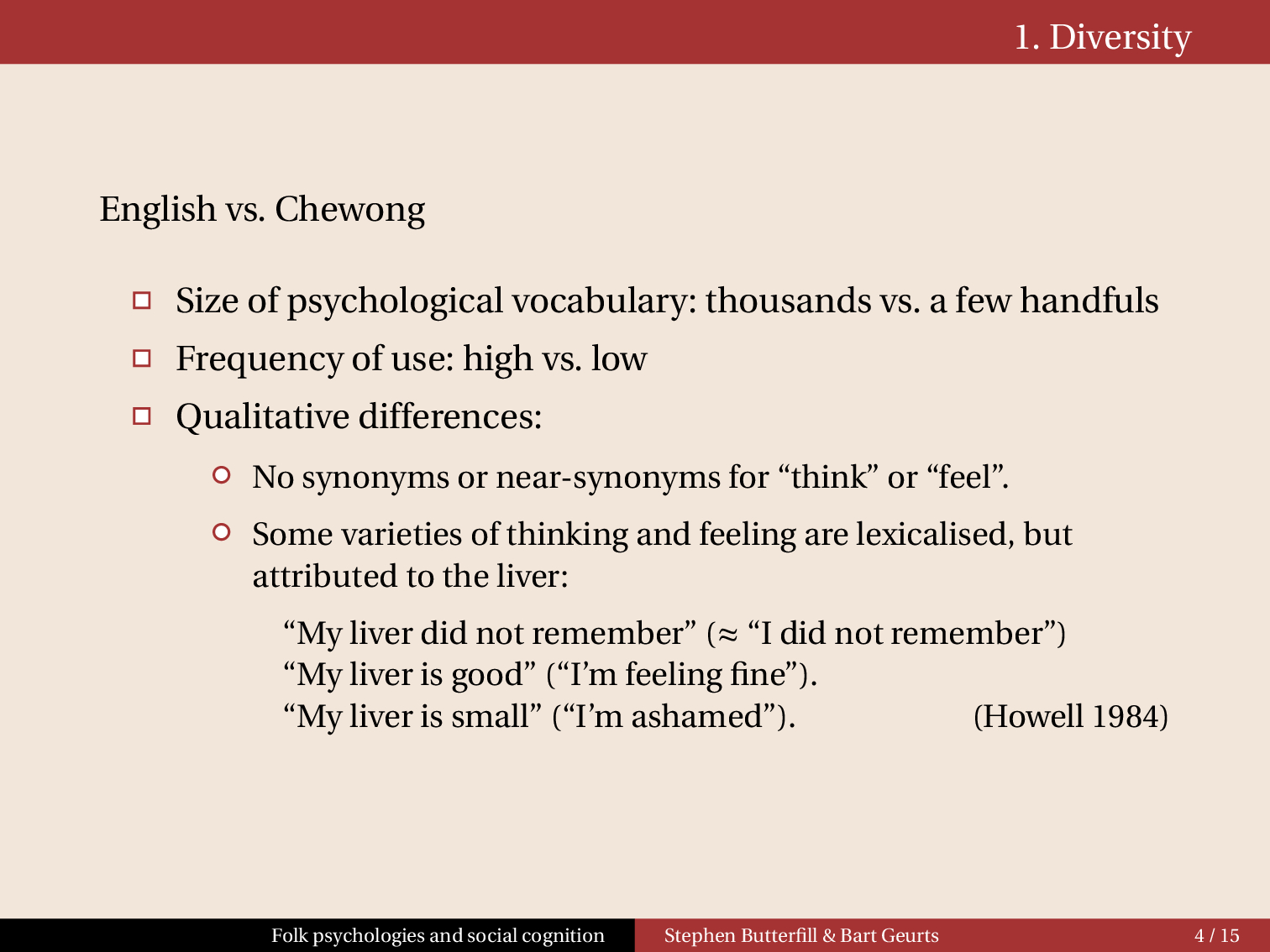
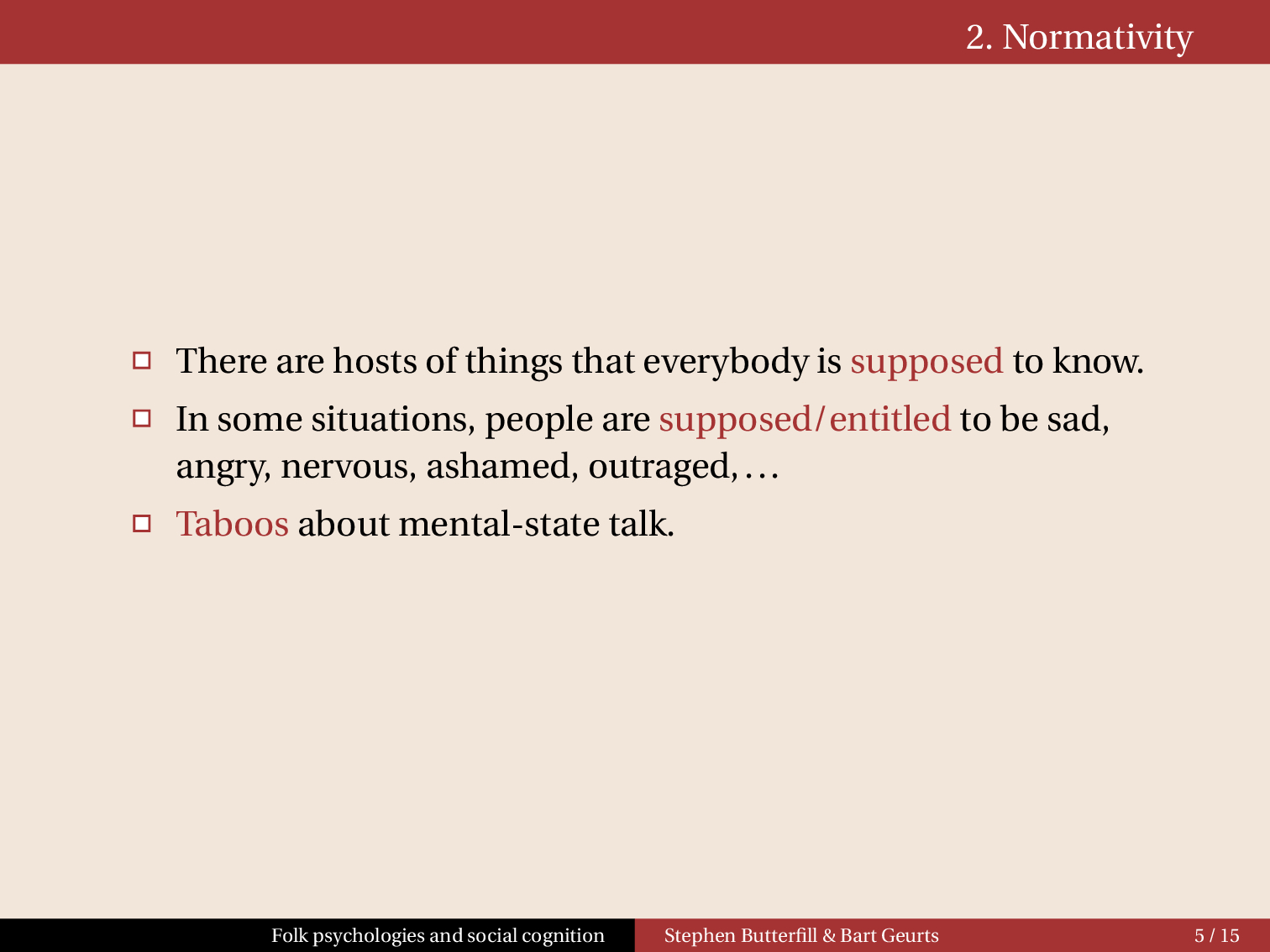
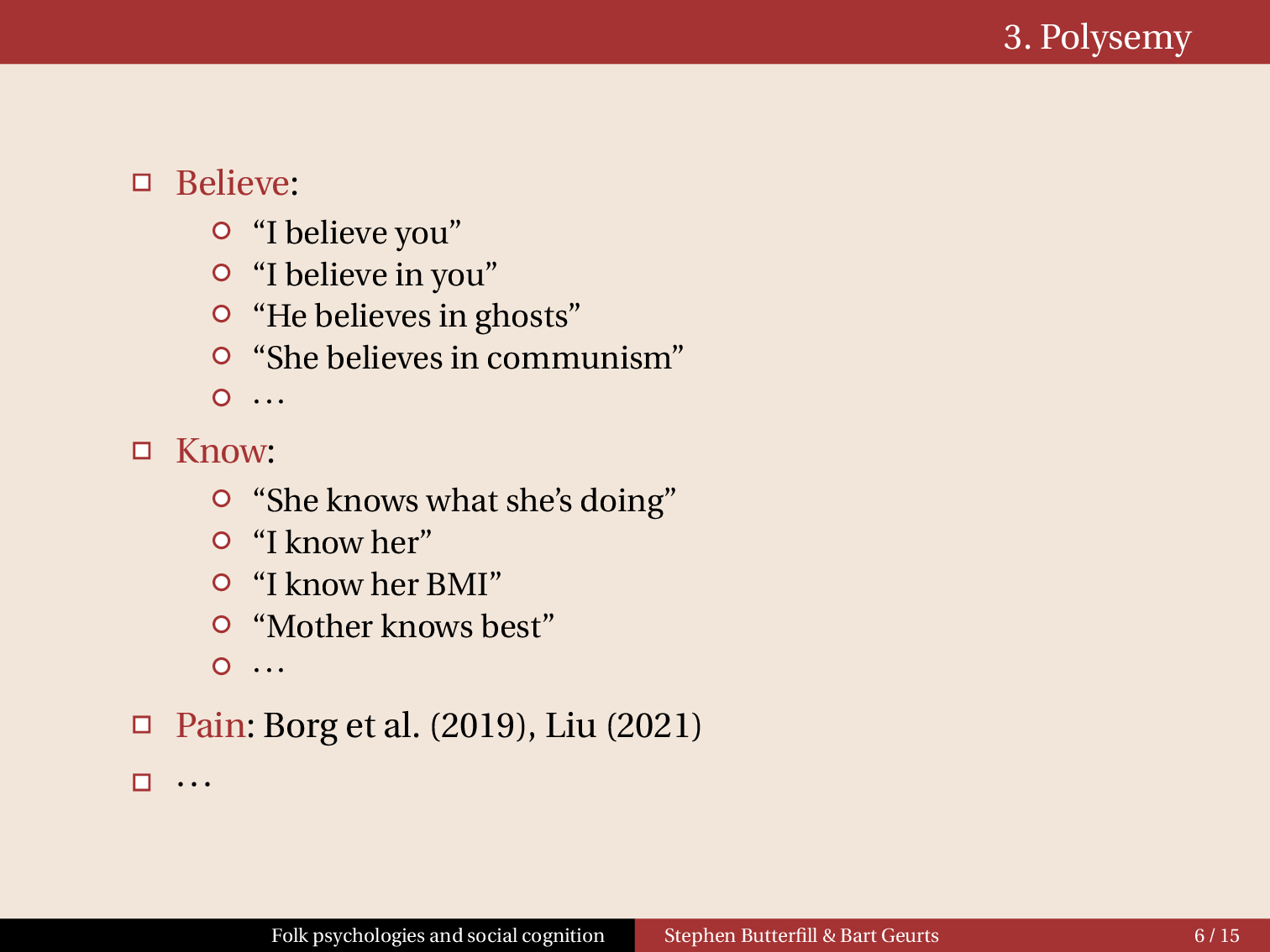
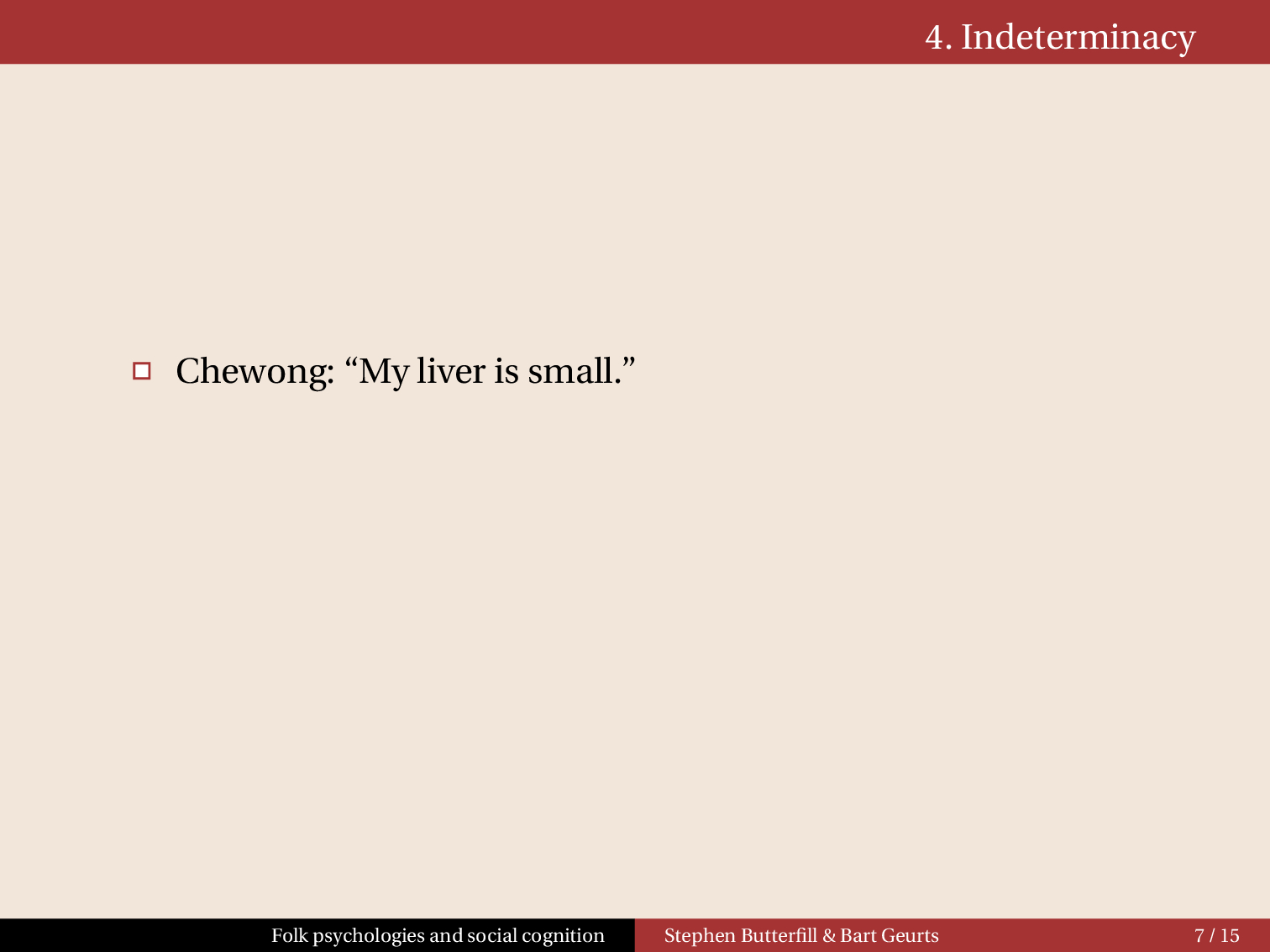
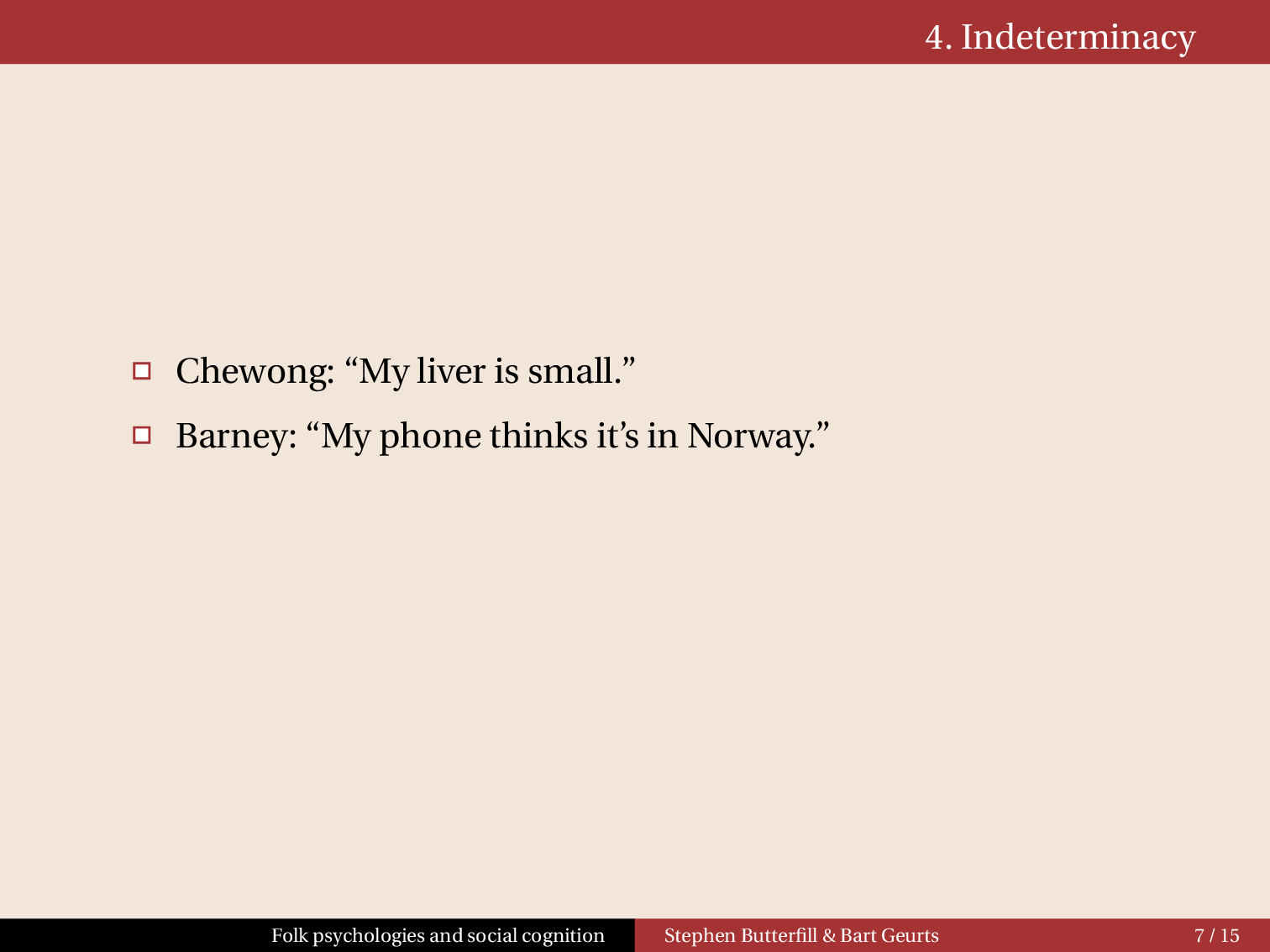
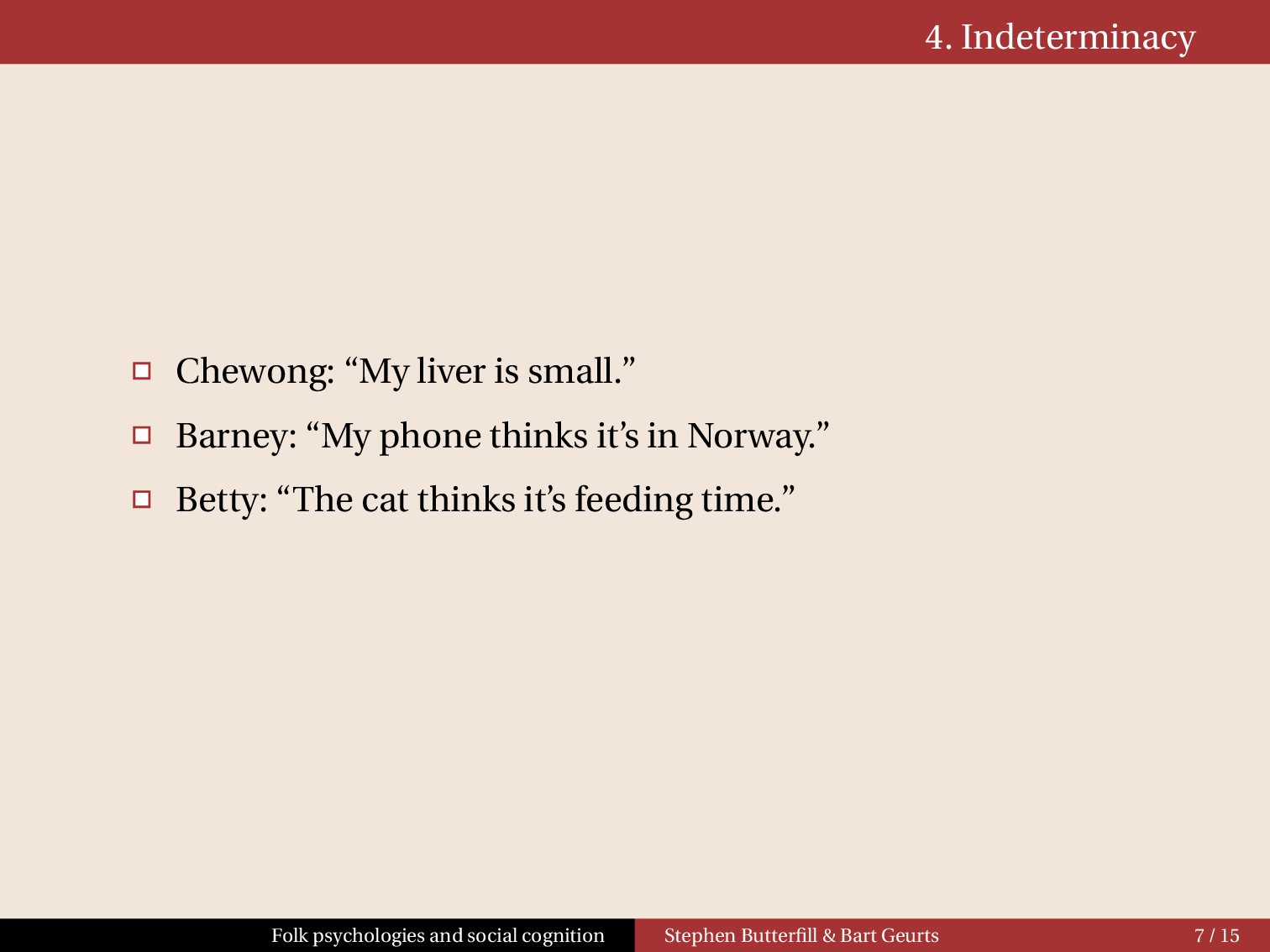
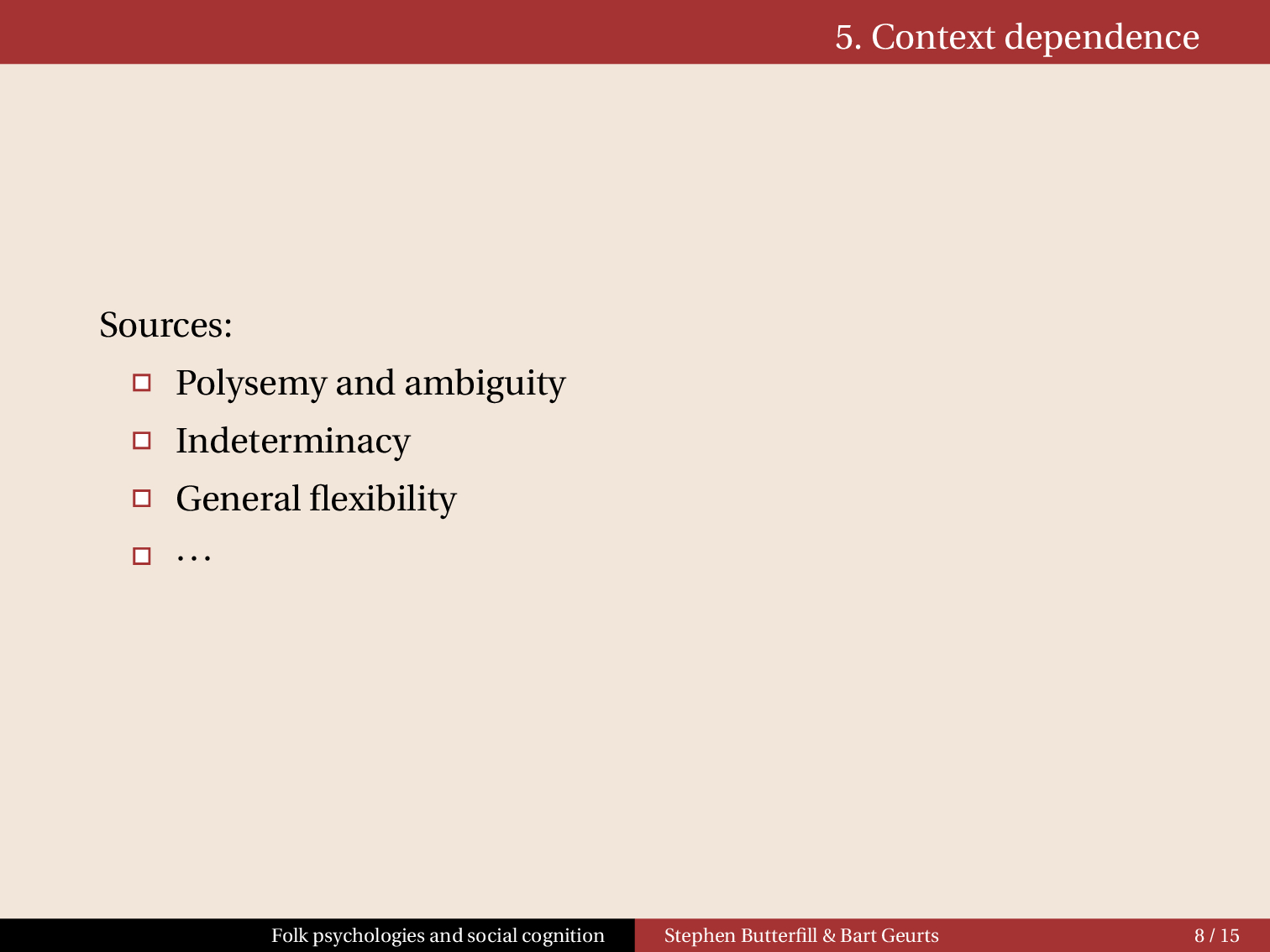
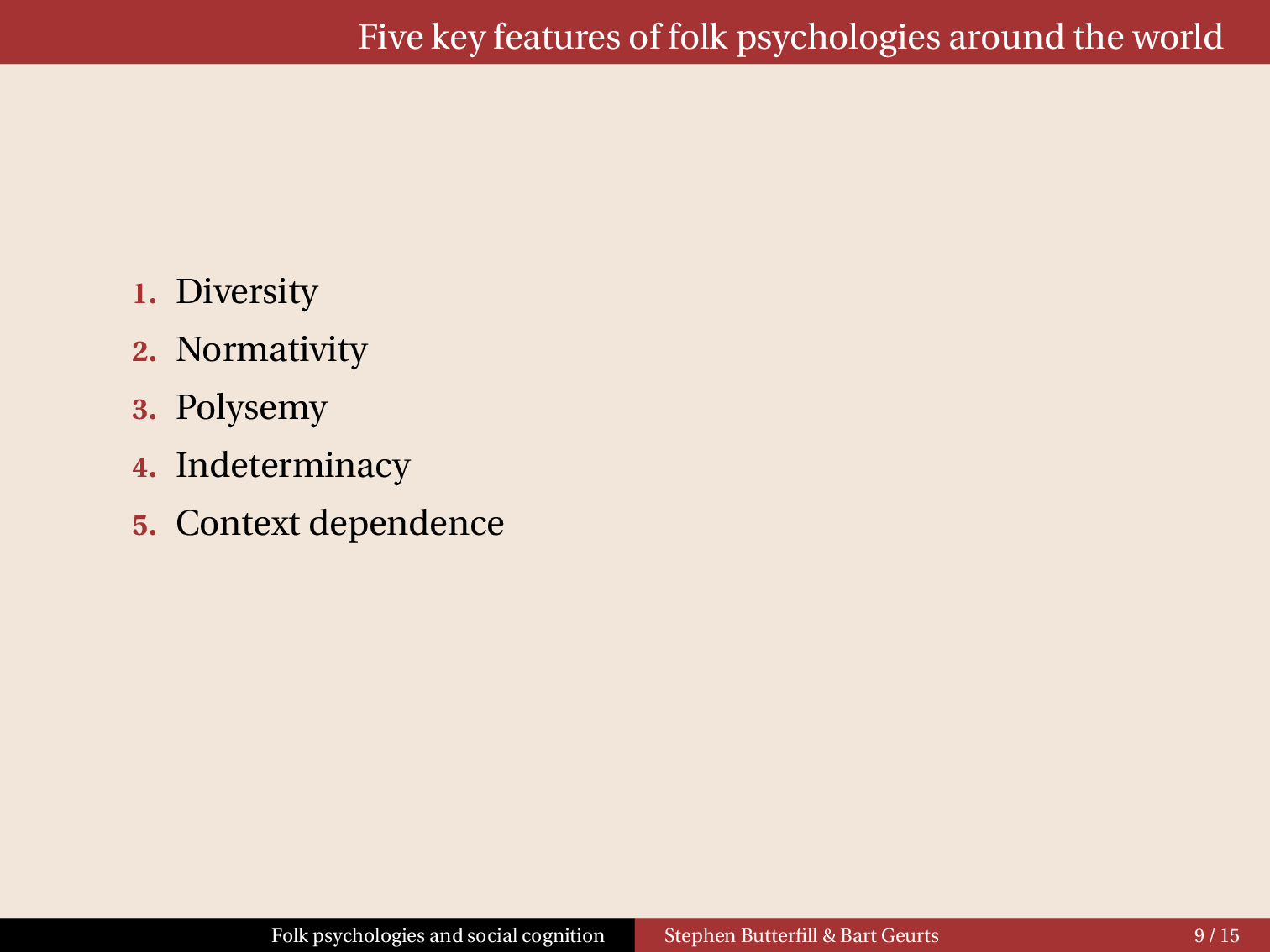
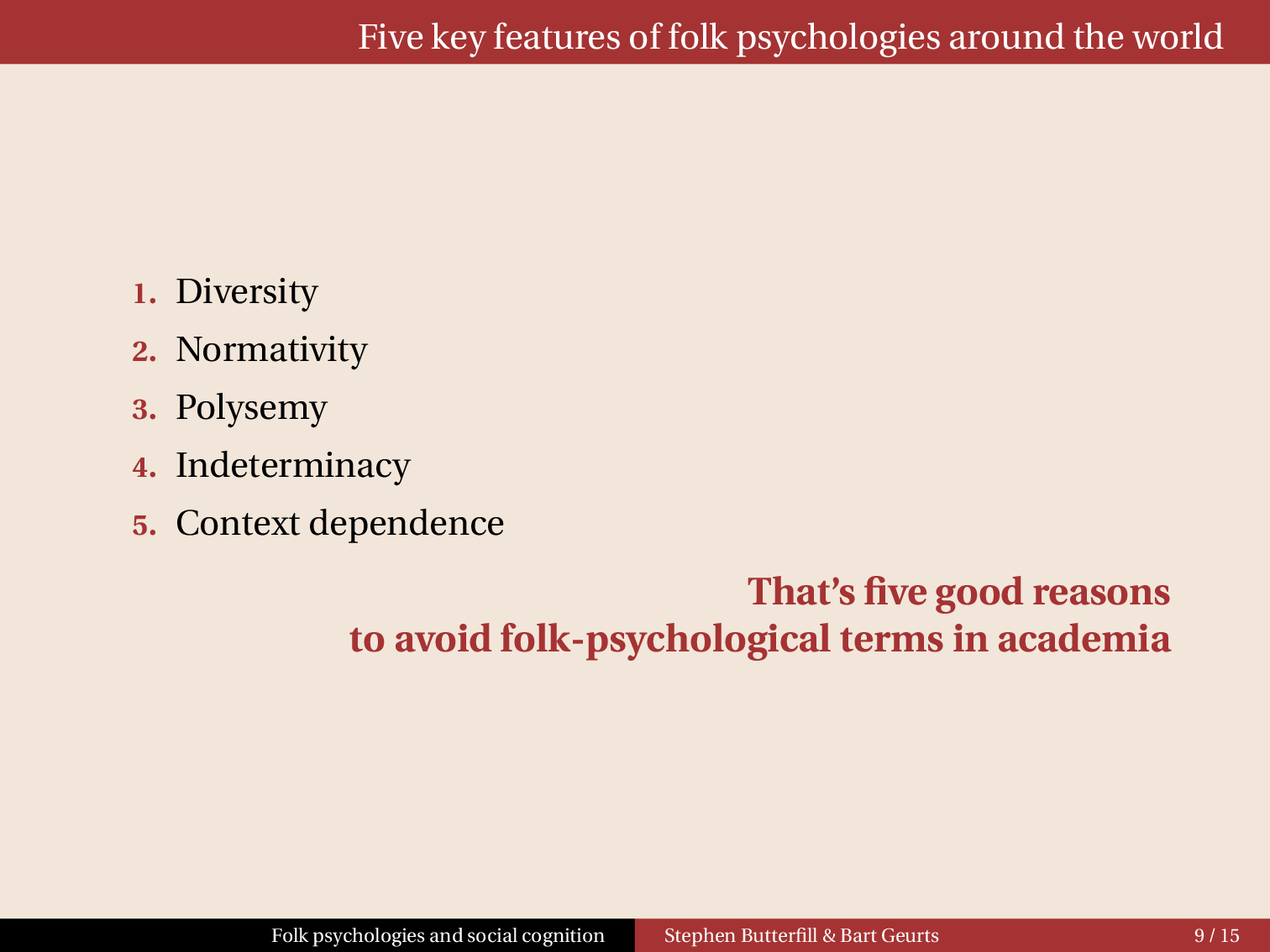
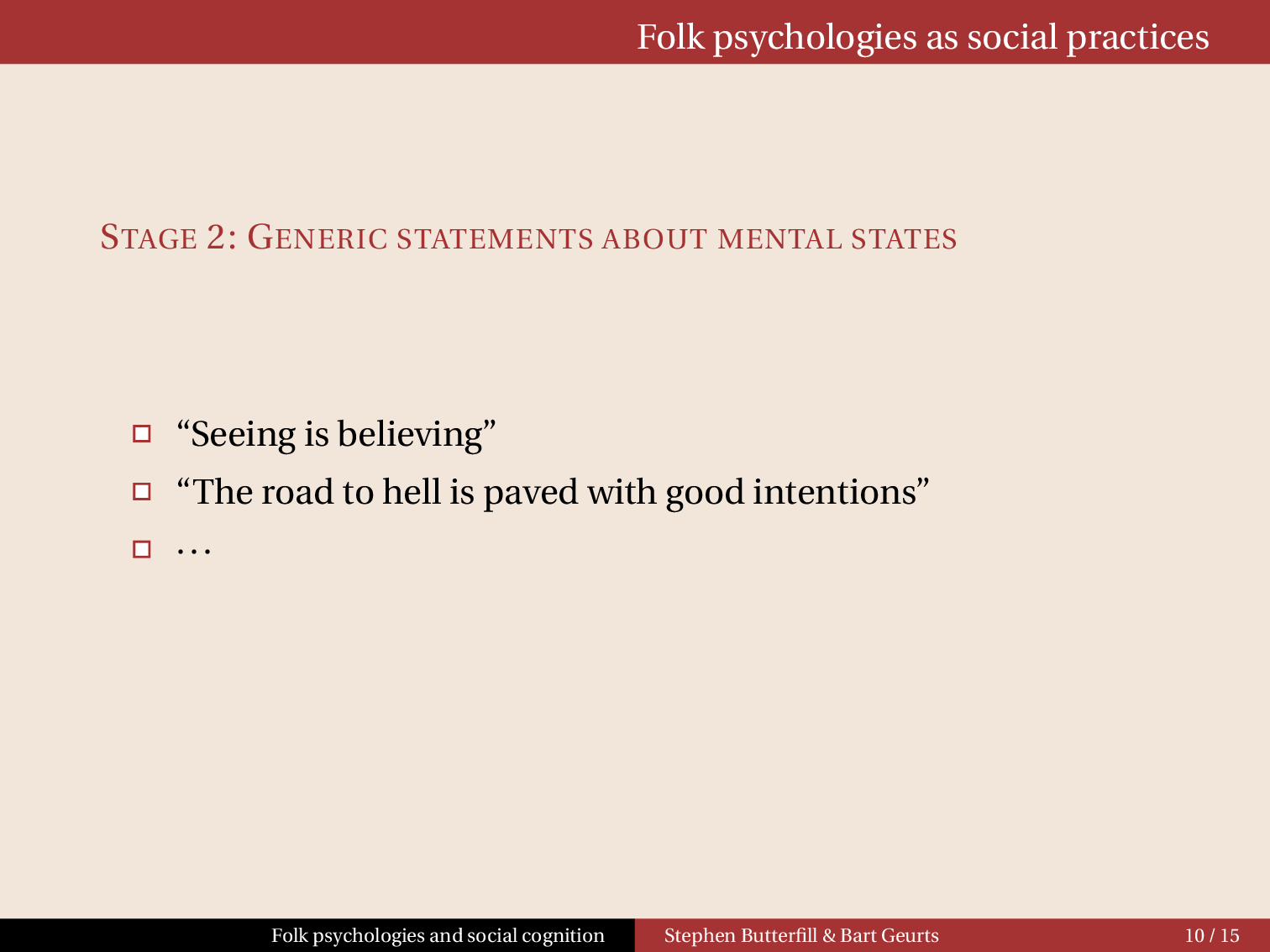
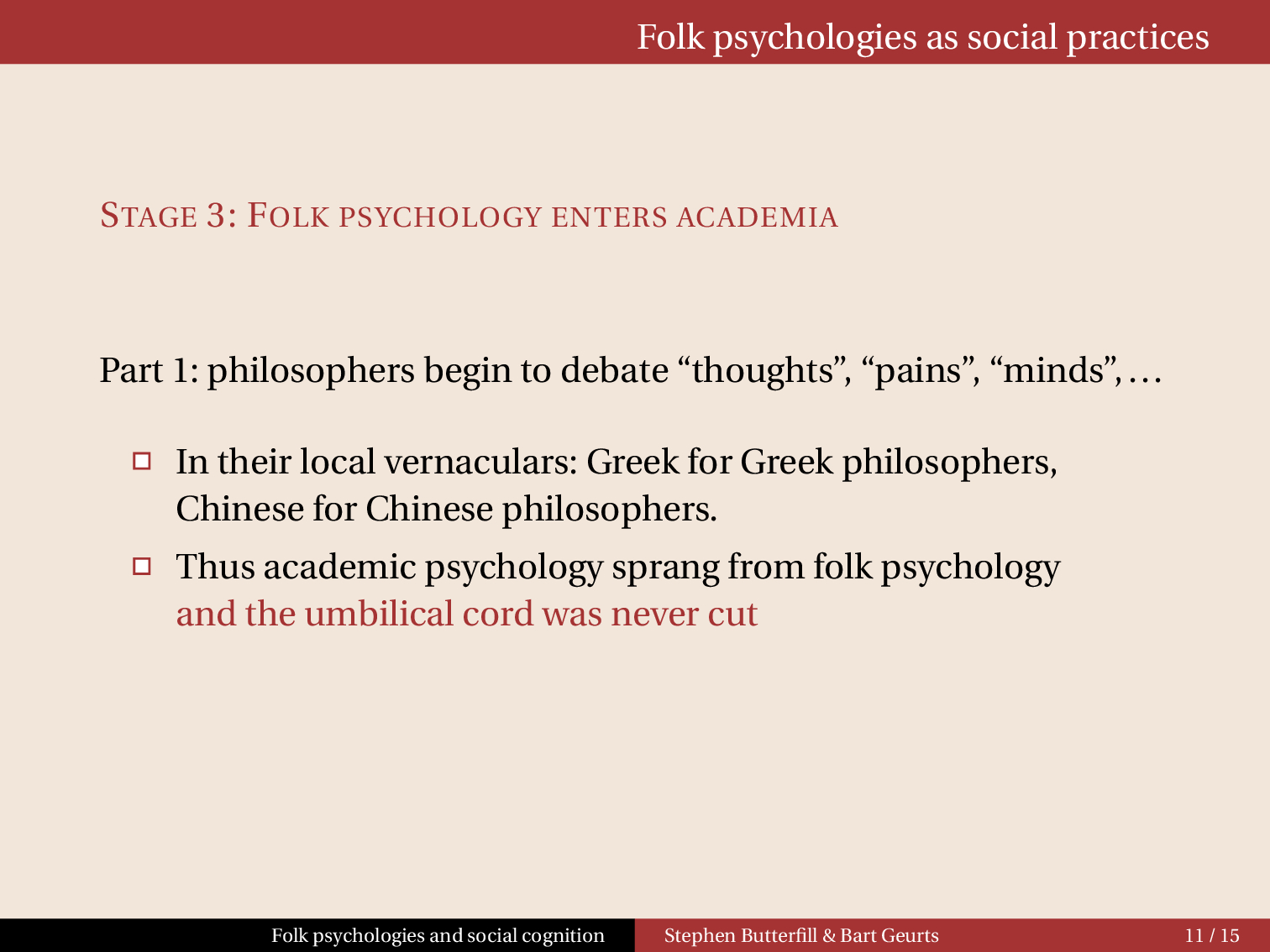
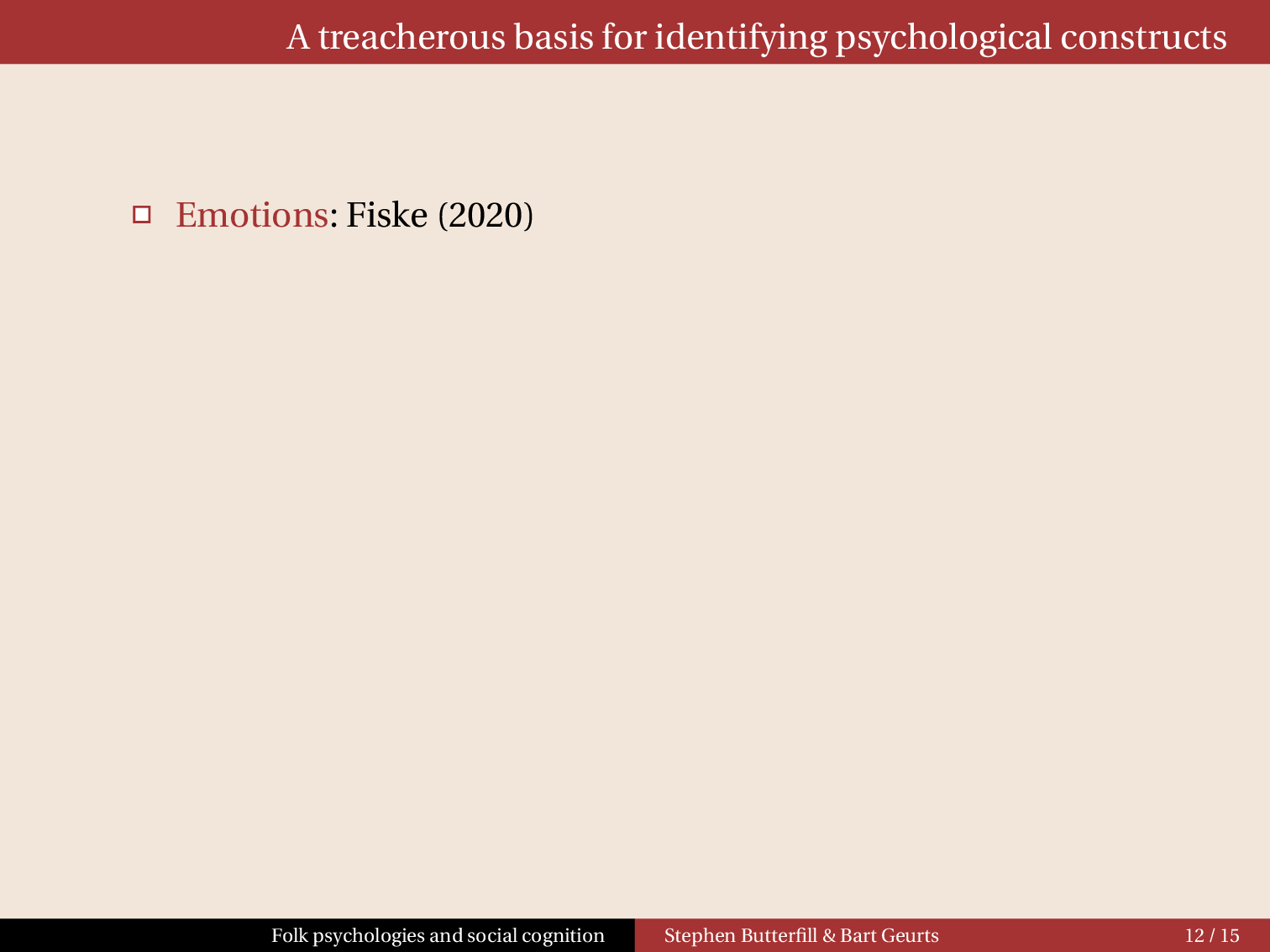
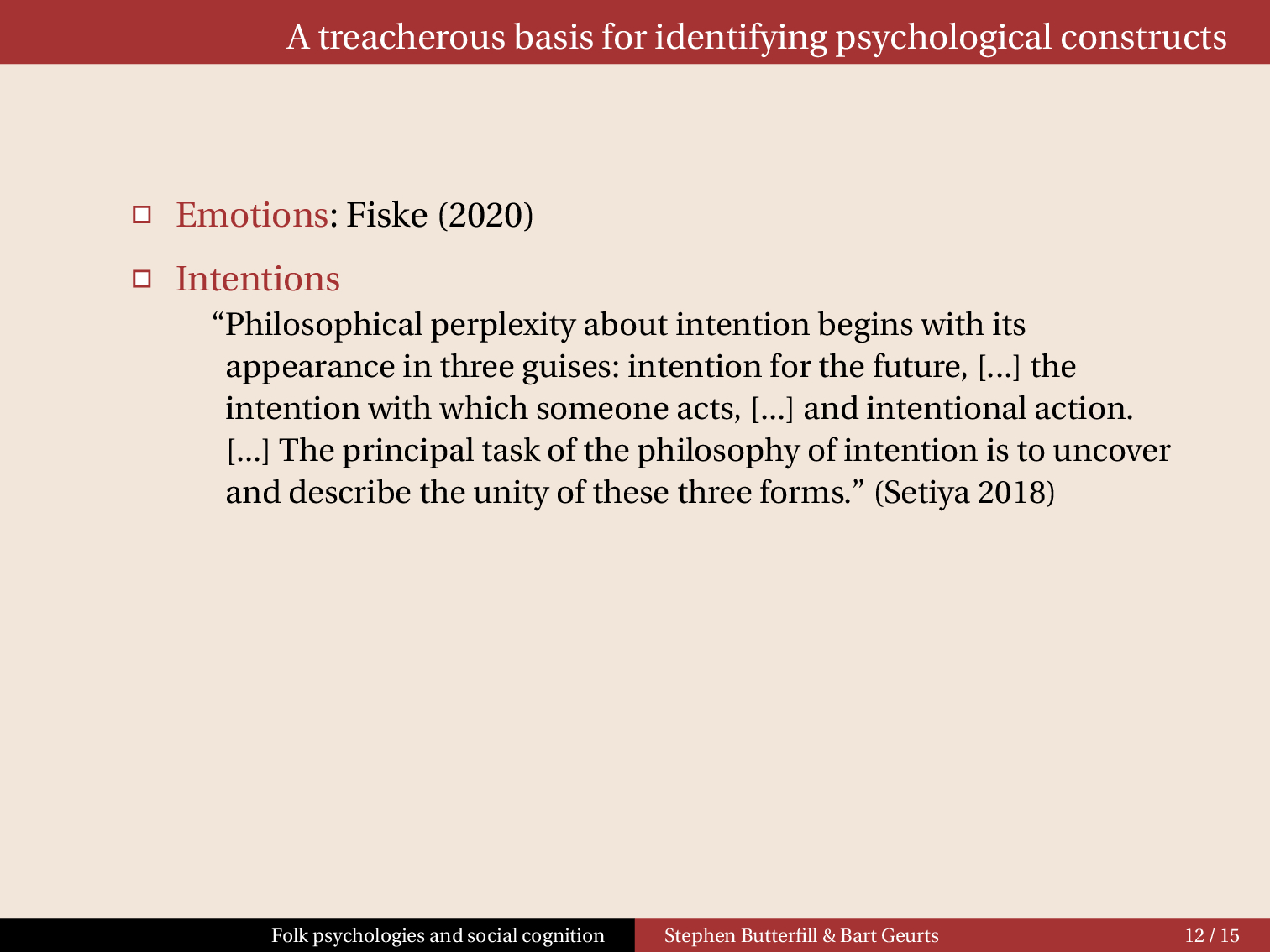
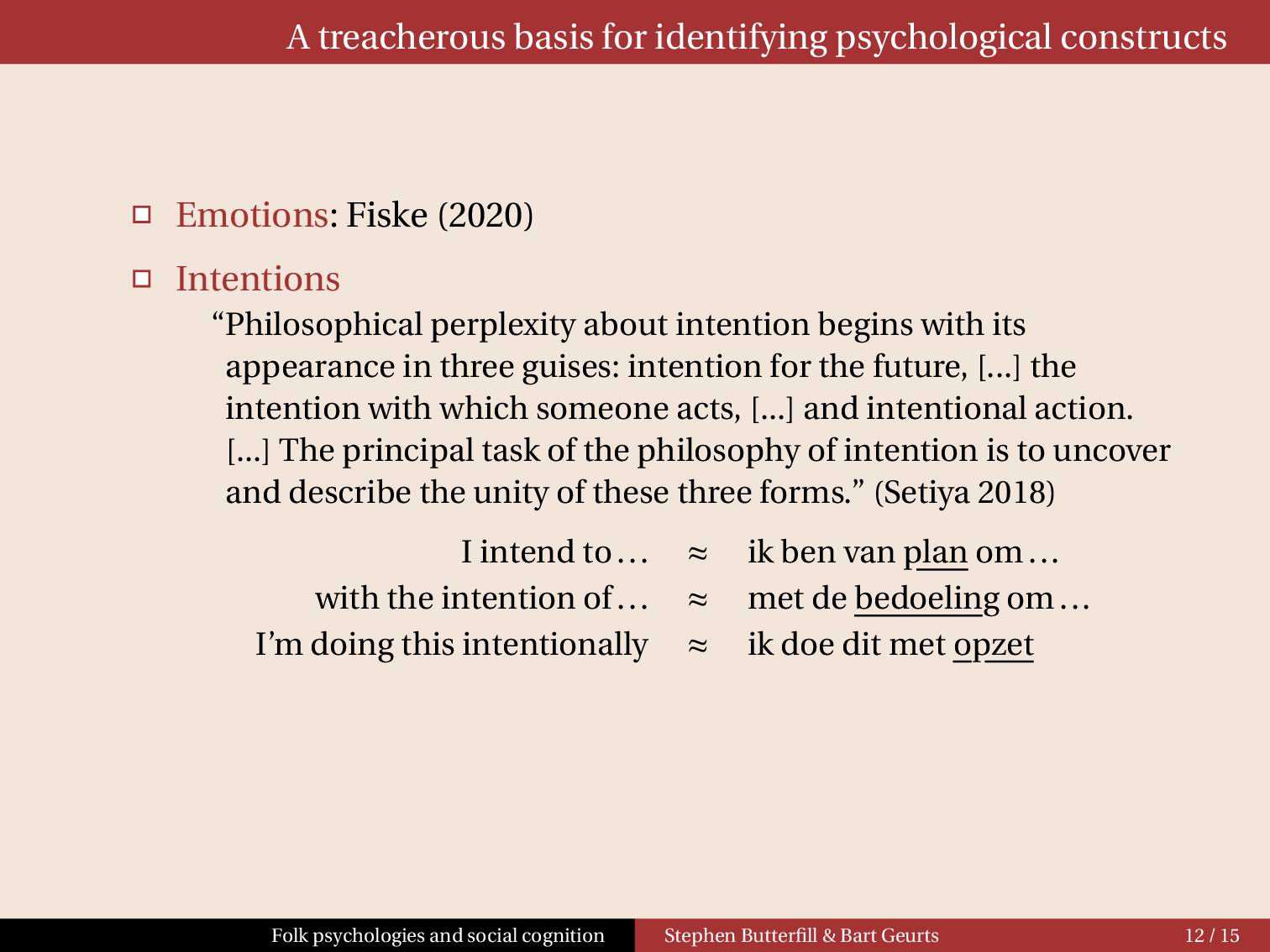
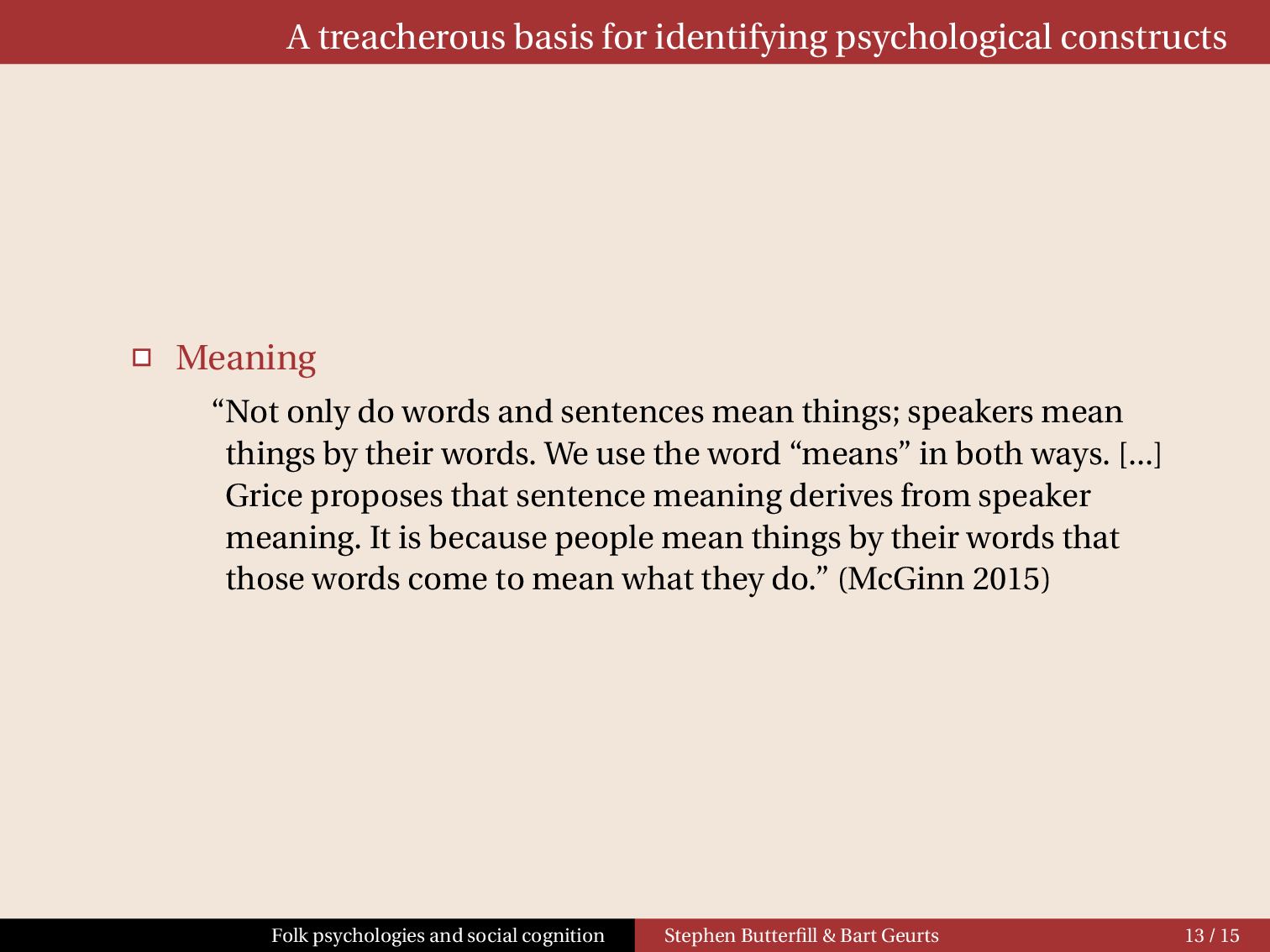
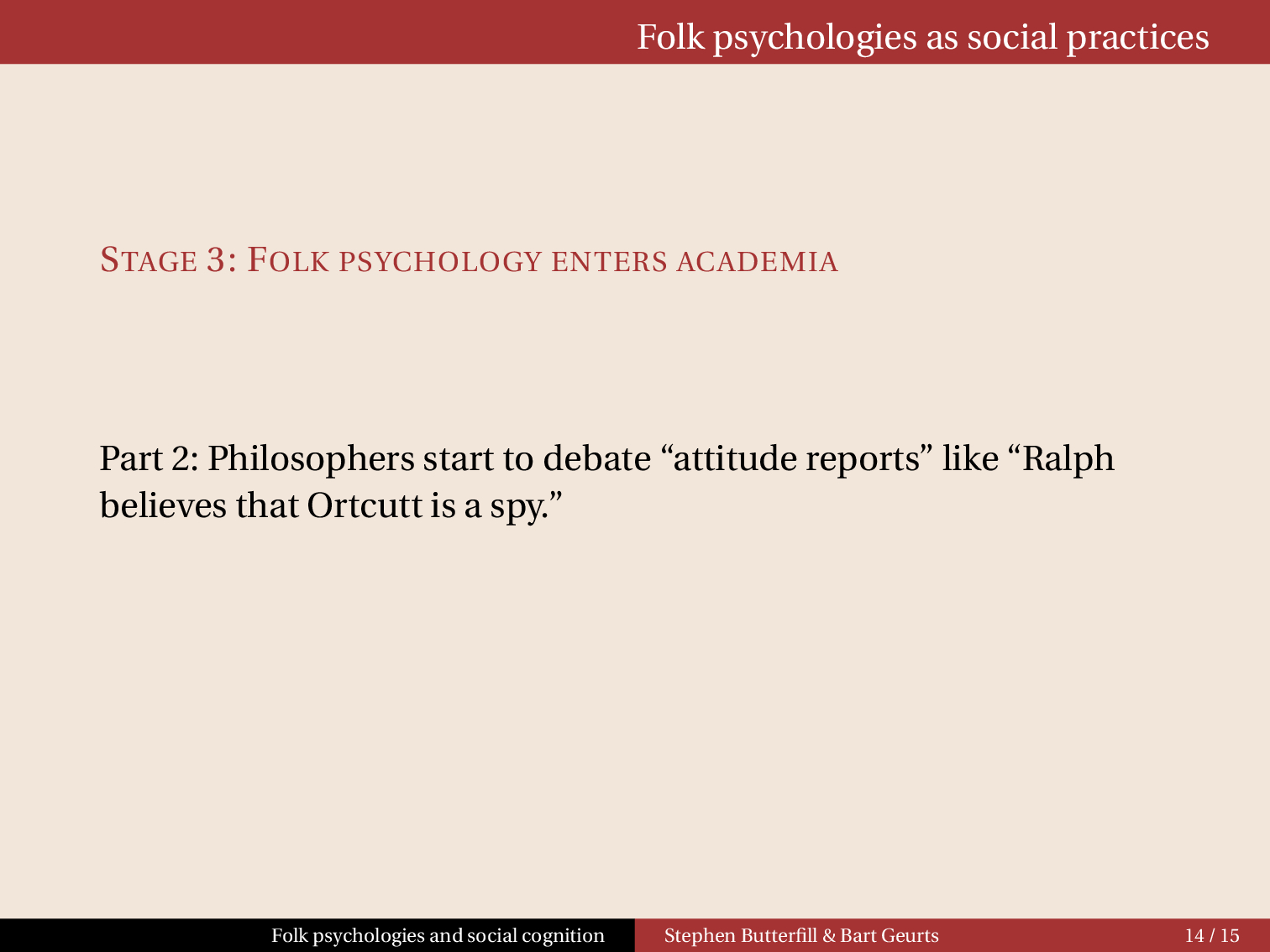
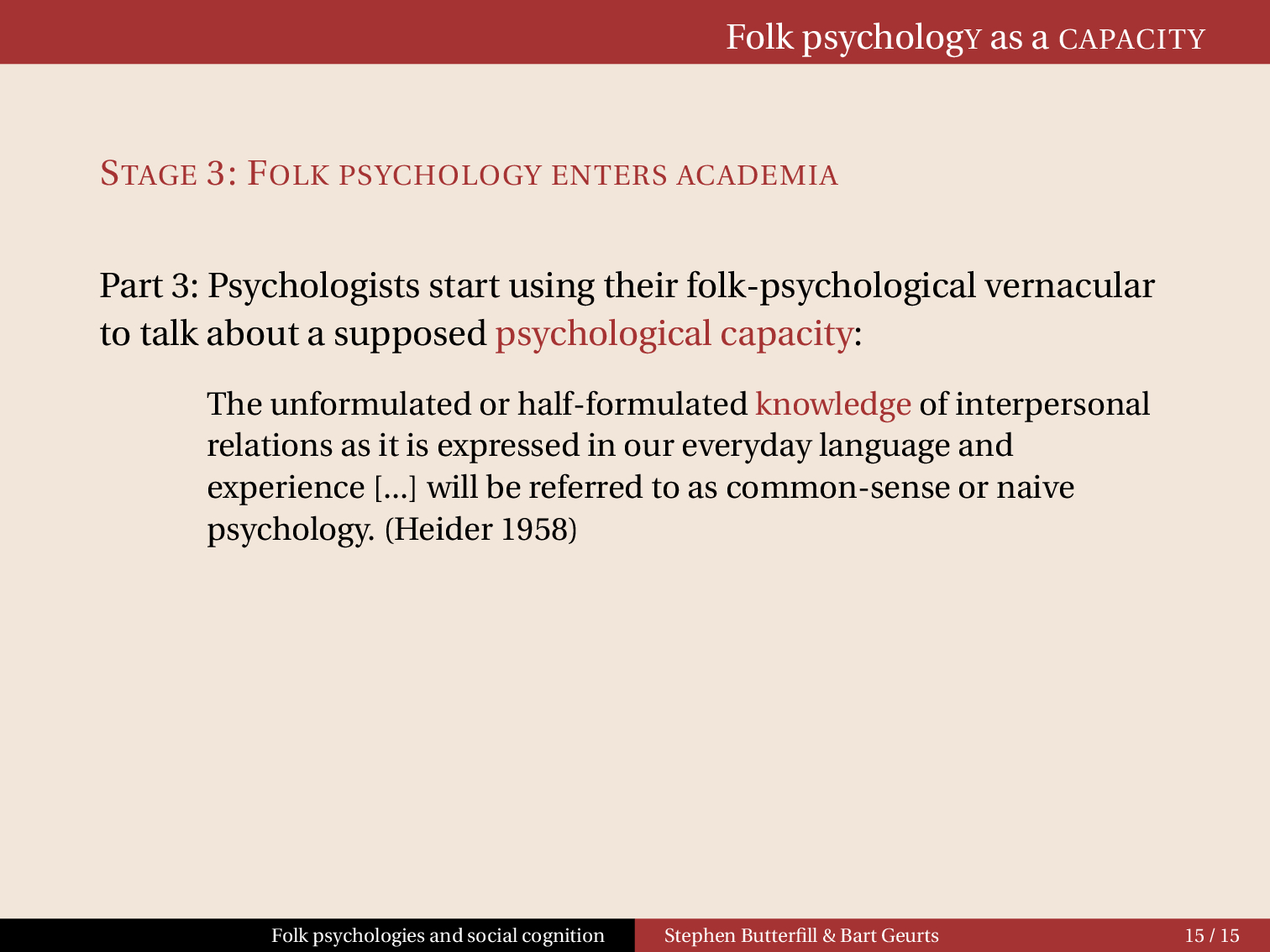
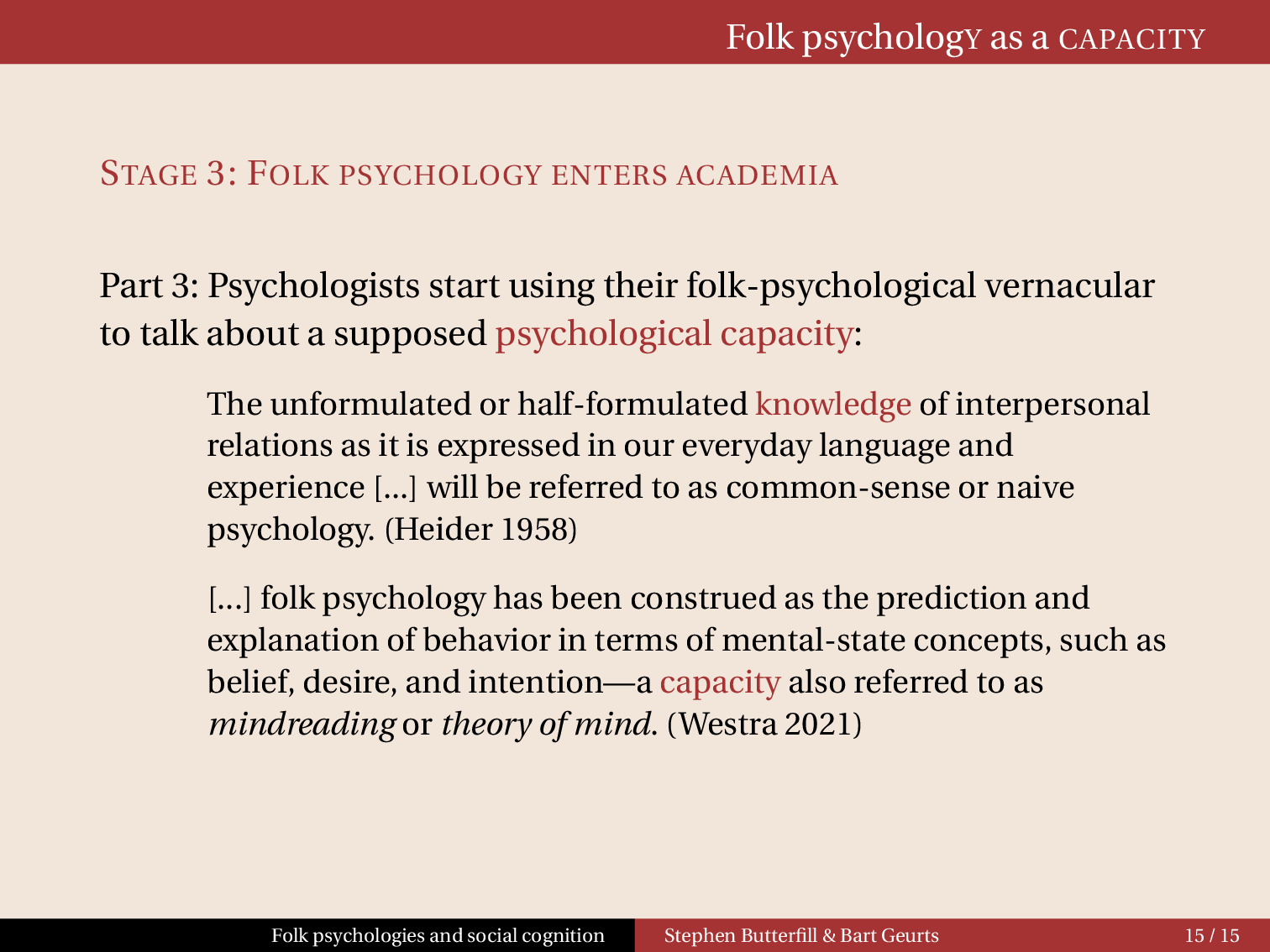


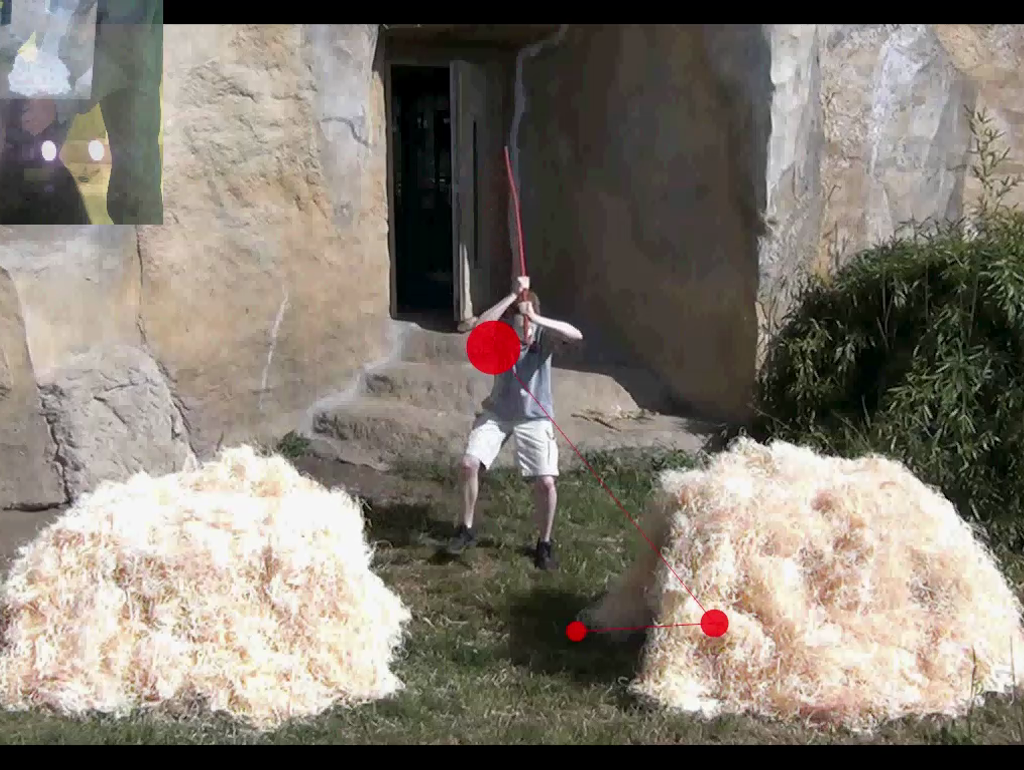
‘the present evidence may constitute an implicit understanding of belief’ (Krupenye, Kano, Hirata, Call, & Tomasello, 2016)
‘Apes [...] treated the actor [...] as having a false belief’ (Kano, Krupenye, Hirata, Tomonaga, & Call, 2019, p. 20907)
passes false belief task ∴ understands belief
Why is this a correct inference? Two possibilities ...
Justification 1
‘Comparative psychologists test for mindreading in non-human animals by determining whether they detect the presence and absence of particular cognitive states.’
(Halina, 2015, p. 487)
Justification 2
1. [fact] False belief tasks appear to test for a single underlying competence in adult humans
(Flynn, 2006, p. 650; Wellman, Cross, & Watson, 2001)
2. [assumption] False belief tasks test for the same underlying competence in chimps (and infants).
3. [stipulation] ‘understanding belief’ is whatever that competence is.
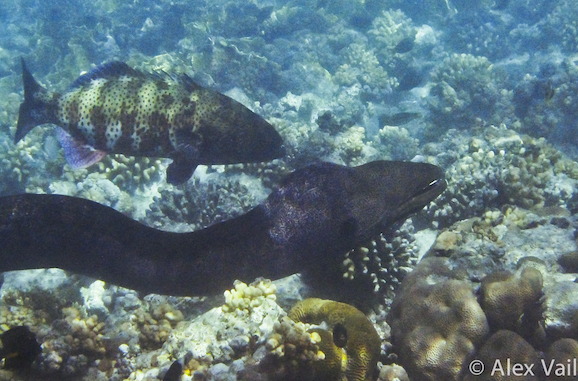
‘Of particular interest [...] is the question of what chimpanzees intend their gestures to mean’
(Hobaiter & Byrne, 2014, p. abstract)
‘These [ravens’] signals thus qualify [...] as intentionally produced communicative gestures and are understood by receivers’
(Pika & Bugnyar, 2011, p. 4)
‘The grouper’s signalling has hallmarks of intentionality [...]: persistence until the goal is reached, elaboration of the communication if it does not initially achieve its goal, and means-ends dissociation by using two signals for the same goal’
(Vail, Manica, & Bshary, 2013, p. 5)
operationalisations
Planning is a mark of intention
Some spiders (portids) can plan detours
(Jackson & Cross, 2011)
Therefore:
Spiders have intentions
Spiders do not have intentions
(Frankfurt, 1978, p. 162)
Some spiders (portids) can plan detours
(Jackson & Cross, 2011)
Therefore:
Planning is not a mark of intention
| INTENTION | yes | no |
| Is it a mental state? | Davidson (1978) | Thompson (2008) |
| Is it a belief? | Velleman (1989) | Bratman (1987) |
| Entails belief? | Harman (1976) | Levy (2018) |
| Linked to planning? | (Bratman, 1985) | |
| Incompatible with habitual? | Kalis & Ometto (2021) | |
| Entails non-observational knowledge | Anscombe (1957) | |
| Comes in two kinds? | Searle (1983) | Brozzo (2021) |
Eschew Academic Folk Psychologizing
Challenge: What do operationalisations of ‘intentional communication’* operationalise?
*(persistence, elaboration and and means-end dissociation)
Continue with Academic Folk Psychologizing
Challenge: Do fish have communicative intentions? Can spiders intend? Can fish experience betrayal?
‘species capable of theory of mind [...] would understand that their caregiver made a conscious decision to deceive them’ (Oldfield, 2022)
‘it is quite possible that [...] you can betray a fish’(Balcombe, 2022, pp. 60--1)
conclusions and recommendations
appendix
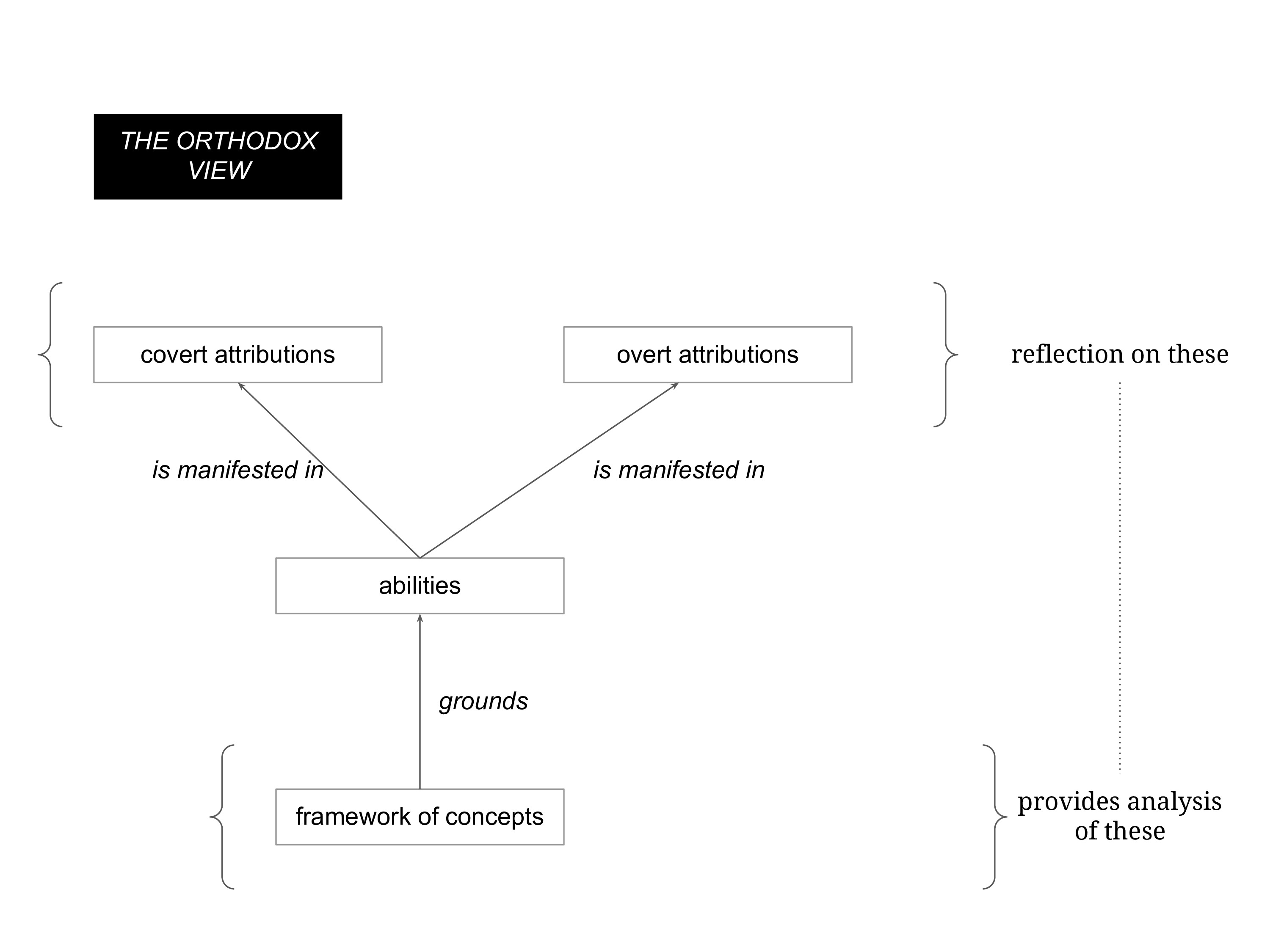
‘epistemic case intuitions are generated by [...] folk psychology’
Nagel (2012, p. 510)